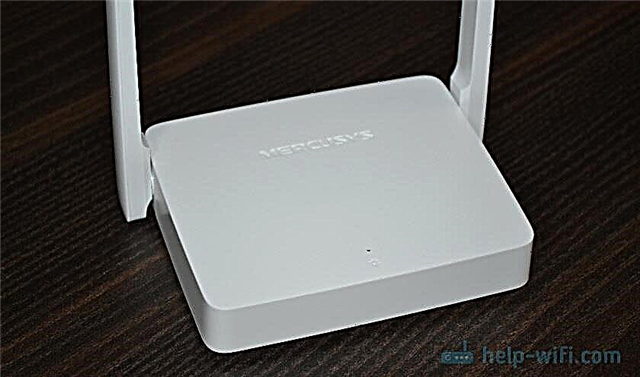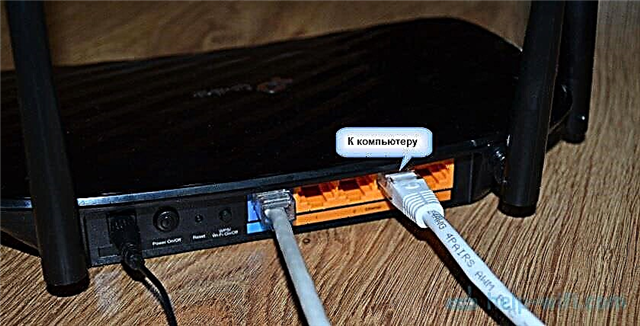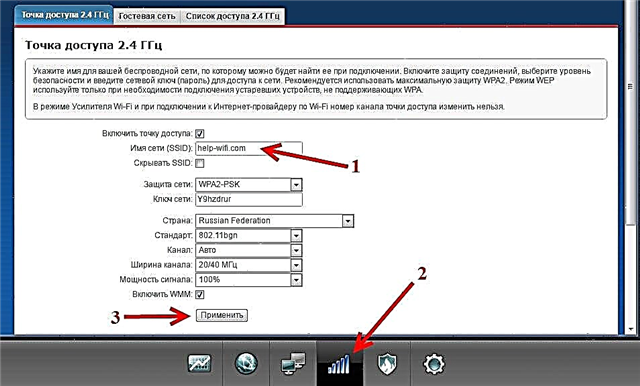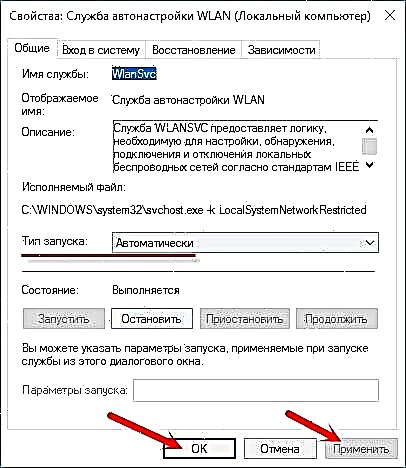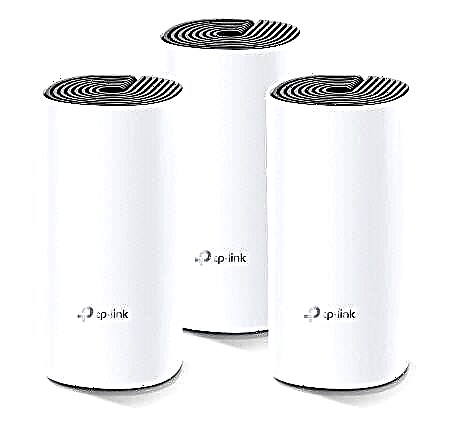Routers are boring devices. Well, agree. And the process of choosing a router is no less boring and complicated, since we simply do not follow the development of the Wi-Fi technology itself, we are not interested in the characteristics, new products, etc. We simply do not need it. And that's okay. A router is a device that we buy, set up, and it gathers dust somewhere. We remember about it only when the Internet starts to fail, or stops working altogether. And we start to think about choosing and buying a new router for our house or apartment only when the old router stops working altogether, or the connection speed drops, devices turn off, etc. Not always and not for everyone, of course, but in most cases this is so ... Four years ago I wrote a similar article, but it is already outdated. Therefore, I decided to update it and talk about choosing a router in 2020.
To be honest, little has changed on the router market in 4 years. Of course, new models have appeared, and even manufacturers. Dual-band routers supporting 802.11ac (Wi-Fi 5 GHz) have dropped in price, new devices have appeared - Wi-Fi Mesh systems, and routers with support for the new Wi-Fi 6 (802.11ax) standard have just begun to appear. This is a must-know when choosing a Wi-Fi router in 2020. In this article, I will cover this in more detail.
What to look for when choosing a router in 2020?
Such standard characteristics as the speed of the wireless network, WAN / LAN ports, the presence of USB and some functions are all very important, and we will talk about this later. But first, let's see what has changed in the router market over the past few years. Since about the time when you chose your previous router. If, of course, you had a router before. If you are just choosing your first router (this is the same thing, for more details in the article What is a router? How does a Wi-Fi router differ from a router?), Then this information will also be useful to you.
Dual-band routers are what's hot now
If a few years ago routers with support for the Wi-Fi 802.11ac standard (dual-band that operate at 2.4 GHz and 5 GHz) were just starting to appear on the market, were something new and expensive for the buyer, then in 2020 these are already ordinary routers , of which there are a lot on the market, and their prices are more than adequate. For example, one of the most affordable dual-band Wi-Fi routers costs $ 21 (Netis N4 AC1200, Xiaomi Mi WiFi Router 4A). Yes, a regular router (2.4 GHz, 802.11n) can be bought at half the price, for $ 10. This is the cheapest one. But whether such savings are needed is a question. An interesting fact: the Wi-Fi 802.11ac standard (Wi-Fi 5) is no longer the newest, so routers with support for the latest 802.11ax standard (aka Wi-Fi 6) are already on sale.
What is the advantage of dual band routers: simultaneous support of two ranges. The router simultaneously distributes a Wi-Fi network at 2.4 GHz and 5 GHz. Thanks to the 5 GHz frequency, there is support for the modern 802.11ac standard (it works only at this frequency). Compared to the previous 802.11n standard, the speed is much faster. And the advantage of the 5 GHz frequency is that it is not so heavily loaded with neighboring networks and other interference (compared to 2.4 GHz). Simply put, the speed when connected in the 5GHz band will be faster and the connection is more stable. True, the range of the Wi-Fi network itself will be slightly less. Read more in the article: what is a dual-band Wi-Fi router (Dual-Band Wi-Fi).
Conclusions: in 2020, I recommend choosing dual-band Wi-Fi routers. Especially if you choose a router in an apartment where the 2.4 GHz band is heavily loaded. These routers are already affordable, there are many of them (there is plenty to choose from), and their advantages over conventional routers (2.4 GHz, 802.11n) are more than obvious. In addition, almost all devices (somewhere from 2013-14) have AC support and work with Wi-Fi networks in the 5 GHz range. I mean phones, tablets and other devices.
Wi-Fi Mesh systems - convenient, efficient and no longer very expensive
Once Wi-Fi Mesh systems began to hit the market, they were very expensive. Not much time has passed, but due to the fact that almost every manufacturer has a line of Mesh systems (several different models), and they released simpler and more affordable models, now these devices are no longer associated with something unrealistically expensive.
Briefly about Wi-Fi Mesh systems: these are the same Wi-Fi routers, but with several serious advantages:
- Mesh systems are usually sold in kits of one, two, or three modules. They are also dual band, 2.4 GHz + 5 GHz. If necessary, you can buy more. So, each module is a separate router. But these modules can be very easily combined into one network. This makes it possible to build a large Wi-Fi network.
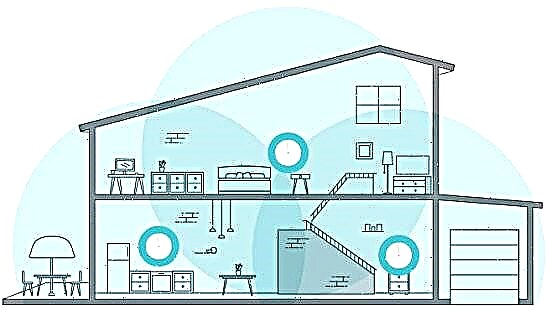
In a large house, or apartment. Or in the house and in the buildings attached to it, in the yard. We can expand (strengthen) the Wi-Fi network simply by installing another module. - This Wi-Fi network, which is created by several modules of the Wi-Fi Mesh system, is seamless. This means that devices throughout the entire range of the network keep a stable connection without interruptions when switching between the modules themselves (for example, when moving around the house). This is called seamless Wi-Fi, or fast Wi-Fi roaming. You can read more about this in this article.
- Very simple installation, configuration and management process. Everything is done through the application from a mobile device.
A separate article on these devices: Wi-Fi Mesh systems - what is it and why is the future behind Mesh networks?
Such a Wi-Fi network (seamless, and expandable by installing additional modules) cannot be built from two conventional routers, or a router and a Wi-Fi signal amplifier. But in 2020, some manufacturers are releasing routers with support for 802.11r, 802.11v standards (which are responsible for fast roaming in Wi-Fi networks), which can be combined into a single, seamless Wi-Fi network. For example, these are some models of Keenetic routers (City, Air, Extra, Speedster). Or OneMesh technology from TP-Link, AiMesh from Asus. For example: router Archer A7 (with the latest firmware) + Mesh Wi-Fi signal booster TP-Link RE300 = seamless Wi-Fi network. In fact, this is the same Mesh system.
Conclusions: Wi-Fi Mesh system is an ideal solution for a large house or apartment. Or in cases where you may need to expand your wireless network. But it's easier to buy a system from the required number of modules right away than to bother with the selection of a router, amplifier, set up all this, etc. Unless you already have the same Archer A7, and you need to amplify the signal. In this case, we simply buy an amplifier that supports the same technology (standards) and get a seamless wireless network in our house or apartment.
Routers with Wi-Fi 6 (802.11ax) in 2020 are expensive and most likely not needed yet
Wi-Fi 6, aka 802.11ax, is the newest Wi-Fi standard. At the beginning of 2020, Wi-Fi routers with Wi-Fi 6 support are just beginning to appear (at least in the Ukrainian and Russian markets). These are top-end, unrealistically expensive models of routers from the most powerful manufacturers of network equipment (for example: TP-Link Archer AX6000, Asus ROG Rapture GT-AX11000, GT-AX11000). It is clear that very soon all manufacturers will release routers with 802.11ax support. New models will appear and prices will fall. Everything will be exactly the same as with Wi-Fi 5 (802.11ac) in its day.
While routers with Wi-Fi 6 will be actively bought, it will take several more years. After all, it's not only the router itself, but also the devices that we connect to it. Only some phones, laptops, tablets, which began to be produced closer to the beginning of 2020, have Wi-Fi 6 support. Let me emphasize - only some devices. Such as iPhone 11 Pro, 11 Pro, SAMSUNG Galaxy S20, Galaxy Fold, Note 10, laptops Dell XPS 13 7390, XPS 15 7590, etc. The newest, top and most expensive devices. There is almost no point in choosing a Wi-Fi 6 router if you have no device in your home that supports this standard. Of course, over time, support for Wi-Fi 6 will actively appear in other, more affordable devices.
Conclusions: Wi-Fi 6, of course, has a lot of advantages: much higher speed, efficiency of the Wi-Fi network, stability, security. And this is very cool!  But if we're talking about buying a Wi-Fi 6 (802.11ax) router in 2020, then it's too early. Unless you are very fond of all these new technologies, you have modern devices, fast internet. In this case, you can choose one of the few (at the time of this writing) a router with Wi-Fi 6 and enjoy the new technology. I think that in 2021 the situation with these devices on the market will not change much.
But if we're talking about buying a Wi-Fi 6 (802.11ax) router in 2020, then it's too early. Unless you are very fond of all these new technologies, you have modern devices, fast internet. In this case, you can choose one of the few (at the time of this writing) a router with Wi-Fi 6 and enjoy the new technology. I think that in 2021 the situation with these devices on the market will not change much.
What you need to know when choosing a router for an apartment or a private house?
In the process of choosing a router, there are some points that need to be considered no matter what year it is. We are talking about those selection criteria that were relevant, say five years ago, and will be relevant in another five years. You don't have to waste time on such articles at all. Just go to the store and buy the first router you come across (as a rule, these are some budget models). You can even connect it without any problems and it will work. But it is likely that in six months, or a year, you will go for a new router again. No, not because the old one will break (although this also happens), but because you will miss its capabilities and functionality of the recently purchased router. Or he will not cope with the tasks that you assign to him.
Popular example (many people face this): you want to increase the speed, connect the provider's tariff not up to 100 Mbit / s, but for example up to 200 Mbit / s. But here it turns out that your router does not have gigabit ports. The ports are limited in speed up to 100 Mbps (and now there are a lot of such models on sale). You need to either refuse to increase the speed (since this simply does not make sense), or buy a new router.
Internet connection method (WAN type)
This is the way the router connects to the Internet (ISP). The WAN port on the router is the Internet entrance. In most cases, the provider runs a regular network cable with an RJ-45 connector into the apartment. On almost all routers, the WAN port is Ethernet (for this most common network cable). This is the most popular option.

It happens that the Internet is from a telephone line (RJ-11 connector, it is smaller), in which case you need an ADSL router. In which the incoming WAN port is designed for connecting a telephone cable.
For fiber optics, you need a router with a WAN SFP port. But usually the provider installs a special terminal (a box into which the optical fiber is inserted), and from the terminal the Internet is connected to a regular router via a network cable.
Well, if you have Internet from a USB 3G / 4G modem, then you need a router with support for USB modems.
WAN / LAN port speed
A very important point. Many models of routers, even not very cheap ones, are equipped with WAN / LAN ports that operate at speeds up to 100 Mbps (usually 10/100 Mbps are written in the specifications). You need to understand that it is simply physically impossible to squeeze out more than 100 Mbps from such a router. This is what I already wrote about in the example above. If you want to connect to a tariff with a higher speed (say, up to 200 Mbps), then you will have to change the router. This also affects the speed between devices on the local network (which are connected to the router via cable).
In 2020, I would recommend buying a router with gigabit WAN / LAN ports. Up to 1 Gb / s (10/100/1000 Mbps). It often happens that the difference in price between a router with gigabit and non-gigabit ports is only a few dollars.
They often ask me how the speed is limited to 100 Mbit / s, if the speed of 1200 Mbit / s is declared via Wi-Fi? It's very simple, the speed of a wireless network is the maximum theoretically possible speed based on the supported standards and technologies. Well, some marketing 🙂
Wi-Fi standard and wireless range
We have to choose one of three options:
- Routers supporting 802.11b / g / n (2.4 GHz only).
- Dual-band 802.11b / g / n / ac routers (2.4 GHz + 5 GHz).
- The newest and most expensive 802.11ax routers.
I believe that in 2020 the most optimal choice is a dual-band router. Which supports 802.11b / g / n / ac standards and which operates at 2.4GHz and 5GHz. If there is a lot of money and an understanding of why we need it, we take a device with Wi-Fi 6 (802.11ax) support.
IPTV support
If your Internet provider provides an IPTV service and you use it, then be sure to pay attention to this when choosing a router. See characteristics. There must be declared support for IPTV. Not all models have it.
USB port
For some reason, the presence of a USB port on the router has not become something popular and very much in demand among buyers in recent years. There are still many non-USB models on the market. Perhaps this functionality is simply not needed by anyone. Most often, the USB port on the router is used to connect USB drives and printers, for sharing. And also USB modems (but the presence of a USB port does not mean support for 3G / 4G modems, you need to look at the characteristics).

I have a router with two USB ports, but I don't use them at all. Several times I set up file sharing on a flash drive, but somehow it didn't take root. Perhaps I just don't need it specifically.
More information can be found in the article: Wi-Fi router with USB port. How and which one to choose?
If it is possible to take a router with a USB port, take it. If you don't need it now, it may come in handy in the future.
The number of antennas on a Wi-Fi router
The number of antennas has practically no effect on the range of the Wi-Fi network. Wi-Fi signal strength. This is more influenced by the power of these same antennas, which is measured in dBi. Moreover, the power of all routers is approximately the same. It is limited by the laws of the country in which these devices are sold. Therefore, for example, if in a three-room apartment one router does not finish the signal to the far room, then the other router most likely will not finish it either.
The number of antennas can affect the maximum data transfer rate over Wi-Fi, data exchange with devices in multiple streams (MIMO technology). If you want to choose the best router in terms of the signal strength of the Wi-Fi network (coverage), then you should not focus on the number of antennas. Better get a router with more powerful antennas. True, the manufacturer does not always provide information about the power of the installed antennas.
Performance, or what's the difference between a cheap and an expensive router?
It is important to understand that there is a difference between a $ 20 and $ 200 router, and it is significant. It's just that many people think that you can buy the most budgetary router, and it will work no worse than more expensive models. They both share Wi-Fi, what's the difference? And there is a difference, and it is not only in technical characteristics (supported Wi-Fi standards, port speed, availability of a USB port, etc.), but also in performance.
The more expensive the router is, the more productive and high-quality hardware is installed in it. And the performance and quality of the processor installed in the router, the chipset directly depends on how fast and stable the network can be created using this router. How it will work under load, when you connect all your devices to it, will the speed drop and ping increase under load, will there be connection drops, freezes, etc.
I had a budget router for a long time, now an expensive router (costing more than $ 200) has been installed for more than a year - and believe me, there is a difference. This does not mean that everyone needs to buy flagship router models, no. Moreover, I believe that very expensive models are needed only by those people who understand why they need them. Since not everyone will use all the capabilities of a top router.
I would recommend not choosing the cheapest models. If possible, take something from the middle price range. Dollars for 100. Well, or at least not cheaper than 40-50 dollars.
Which router to choose for a large house or large apartment in 2020?
That's a very good question. And it is very good that it appears during the selection process, and not after the purchase. If your old router did not cover the whole apartment or private house with a signal, or you understand that one router will definitely not be enough, then it is better to take care of this right away. Probably there is nothing worse than when, after installing the router in some distant rooms, it does not catch Wi-Fi. Or, for example, on the second, third floor there is no coverage at all. Or a very bad and unstable signal.
For large houses, apartments and even offices in 2020, I recommend choosing Wi-Fi Mesh systems. I already talked about them at the beginning of the article and there I gave a link to a separate article about these devices. This is the perfect solution for two reasons:
- By installing additional Mesh modules of the system, you can expand the Wi-Fi network even to a very large house. I'm not talking about apartments. We buy, for example, a set of two modules. We install them, and if Wi-Fi coverage is not everywhere where we need it, we just buy and install another 1-2 modules.
- Seamless Wi-Fi network throughout your home / apartment / office. It's like you have one very powerful router installed.
I do not recommend buying a regular router and Wi-Fi signal booster (repeater). They are ineffective. The speed drops dramatically, the network is unstable, clients switch between devices somehow.
If you still do not want to buy a Wi-Fi Mesh system (for example, you need more LAN ports), but understand that perhaps one router will not be enough and you will have to expand the Wi-Fi network, then choose a router with support for additional 802.11r standards. 802.11v. I also talked about them at the beginning of this article (where we talked about Mesh systems). In the future, you can buy another such router, or a signal booster that supports the same standards and use them to create one seamless Wi-Fi network.
But if you are already initially thinking of buying two routers, or a router and an amplifier (or even worse, several amplifiers), then I strongly recommend that you consider buying a ready-made Wi-Fi Mesh system. Believe me, you won't regret it.
Best routers of 2020
Based on the information above, you can already choose a router for yourself without any problems. Moreover, now there is an opportunity to explore different options in online stores, see prices, read reviews. I don't like to recommend specific models. Since everything is very individual. You need to understand that everyone has different tasks, the budget is different, even outwardly, not everyone will like the model that I can recommend. And the appearance of the router is also very important.
But still, let's take a look at several models of routers that I probably could recommend in 2020. These are not very cheap and not very expensive options that are likely to suit more people. In the end, we will also consider several models of Wi-Fi Mesh systems.
1. TP-Link Archer A7
A good router option for a house or apartment.

It has everything you need:
- Support for dual bands and, accordingly, the standard 802.11ac.
- Gigabit ports.
- USB port.
- Simple and intuitive web interface, application control.
- Cool appearance.
From similar models, you can still see the Archer C1200, Archer A6, Archer C7 and the more expensive and productive Archer A9.
You can also read my review of the TP-Link Archer A7 router.
Asus RT-AC1750U or Asus RT-AC65P
Interesting models, performance and functionality of which will definitely be enough for home use. Dual-band, with gigabit ports and a 3.1 standard USB port. Unusual appearance.

If you want a time-tested router, then ASUS has models RT-AC58U, RT-AC66U, RT-AC1200G +. Just read the technical specifications carefully.
D-Link DIR-878, DIR-853, DIR-825
All three routers are dual-band (2.4 GHz and 5 GHz) and with gambit WAN / LAN ports. D-Link DIR-878, for example, is more expensive. But he is the most productive and fastest. And for some reason without USB. D-Link DIR-825 is the most affordable option, which is perfect for a small apartment or house.

For a more affordable option, check out the D-Link DIR-806A. But it lacks gigabit ports.
Keenetic Viva KN-1910
The Keenetic manufacturer has a fairly large line of Internet centers (routers). One of the optimal (in terms of characteristics and price) models is Keenetic Viva. This is of course a dual band model. WAN / LAN ports support speeds up to 1 Gbps, Wi-Fi speeds up to 1267 Mbps. There are two USB ports. Support for 3G / 4G modems, excellent web interface. It can be used as an ADSL modem after purchasing and connecting a Keenetic Plus DSL adapter.

Keenetic has both more affordable and simple models (for example, Keenetic Speedster, Keenetic Extra) and more advanced and, accordingly, expensive (Keenetic Giga, Keenetic Ultra). This is probably one of the best home routers for 2020.
Netis WF2780
Probably one of the most affordable and popular dual band routers in 2020. In terms of characteristics, it is practically in no way inferior to more expensive models from other manufacturers. A very popular and affordable model. Of course, the quality of materials and the hardware itself is perhaps slightly inferior to similar models from TP-Link, or ASUS, but at the price Netis will be twice as cheap.

I had this Netis WF2780, the normal version. Especially when the budget is limited, but you want to take a modern router.
It might be interesting to read: Netis WF2780 - review, configuration, reviews
There is an even more productive, gaming model Netis WF2681 in a red case.
Tenda AC9 and Tenda AC10U
A couple more inexpensive, modern routers, but already from the manufacturer Tenda. Serious enough routers with excellent characteristics. Both are dual-band and with gigabit ports. There is also a USB port.

Read my review of Tenda AC9 and Tenda AC10U.
There are even more affordable options (from dual band). For example Tenda AC5 or Tenda AC8.
Mercusys AC12G
Another affordable manufacturer. And their most popular router is Mercusys AC12G. I advise you to consider the Mercusys AC12G. There is an even cheaper Mercusys AC12, but it lacks gigabit ports. But as an option, if you don't need fast WAN / LAN ports, then you can look at AC12.

This model was on my review: Review of the Mercusys AC12 router.
Xiaomi Mi WiFi Router 4A Gigabit Edition
If we consider routers from Xiaomi, then in 2020 I would choose the Mi WiFi Router 4A Gigabit Edition model. Rather, I would not buy a Xiaomi router at all. No, not because they are somehow bad, I just don't really like them. And many people have various problems during the setup process. But if you love Xiaomi tech, then consider the Mi WiFi Router 4A Gigabit Edition.

This is a common dual-band router with gigabit ports. There is an even more affordable model Mi WiFi Router 4A. No gigabit ports. The appearance and price of these routers certainly attracts the attention of buyers.
Variants from other manufacturers
- MikroTik: hAP ac², hAP ac lite tower, hAP ac.
- Huawei: model Huawei WS5200.
- Totolink: model A3002RU 6617.
- Strong 750.
Please note that above I considered only the optimal (in my opinion) router models that are suitable for home use, and which can be recommended for purchase even at the end of 2020. And most likely they will be relevant in 2021. There are a huge number of other routers on sale, both more affordable and more expensive and advanced routers. Choose a model based on your requirements and budget. But I would not advise you to save a lot on the router.
Choosing a Wi-Fi Mesh system in 2020
Not even all networking equipment manufacturers have released their Mesh systems yet. But despite this, the choice is already decent. As a rule, the manufacturer produces a line of Mesh systems from several models. This line includes devices that differ in their capabilities, performance and, of course, in price. We will look at one model from the most popular manufacturers. I will frustrate the optimal (in my opinion) options for Wi-Fi Mesh systems for a house or a large apartment.
TP-Link Deco M4
Cool Mesh system, an overview of which you can read in a separate article: TP-Link Deco M4 - Wi-Fi Mesh system overview, features, characteristics.

I also recommend considering a similar, but more affordable model TP-Link Deco E4. There are more affordable options in the Deco range of Mesh systems. For example, the most affordable is TP-Link Deco E3.
ASUS Lyra Mini MAP-AC1300
ASUS has a more modest range of Mesh systems. There are no options available like TP-Link. But ASUS Lyra Mini MAP-AC1300 is quite an interesting Mesh system, so I recommend considering it if you are choosing a Mesh system for your home.

ASUS also has another interesting model, the Lyra Trio, but it will be slightly more expensive.
Tenda Nova MW5s
Tenda also has a whole line of Mesh systems, but the most optimal model in my opinion: Tenda Nova MW5s.

For a closer look at these systems from Tenda, you can read my review on Tenda Nova MW6.
Consider also Mesh systems from other manufacturers. For example: Linksys Velop Intelligent Mesh WiFi System, Ubiquiti AmpliFi High Density
What to choose in the end?
It's up to you to decide! I can only give some advice, voice my thoughts on this issue. But this will be exclusively my subjective opinion. The way I would choose a router in 2020-2021 for myself or my friends.
Let's summarize:
- If the apartment or house is very large (or a move is planned in the near future), one router will not be enough (in terms of Wi-Fi network coverage), then I advise you to immediately buy a Wi-Fi Mesh system.
- I recommend looking aside only dual-band routers (with support for 2.4 GHz and 5 GHz) and 802.11ac.
- It is advisable to choose a model with gigabit WAN / LAN ports.
- Try not to buy the cheapest router models. Even if you choose a regular router (2.4 GHz, 802.11n), then it is better to consider older models that have been on the market for a long time. For example, such as TP-link TL-WR841N.
- Carefully study the technical specifications and read customer reviews in online stores. True, purchased reviews are not rare there, but they are not difficult to distinguish from real ones.
- As for routers with Wi-Fi 6 (802.11ax), then I believe that their time has not come yet. It's too early. But if you have money and really want it, you can buy it.
I will be glad to answer your questions in the comments. Just please, let us advise a specific model without asking 🙂 You also do not forget to share useful information on choosing a Wi-Fi router, maybe you have some interesting experience in this matter.



